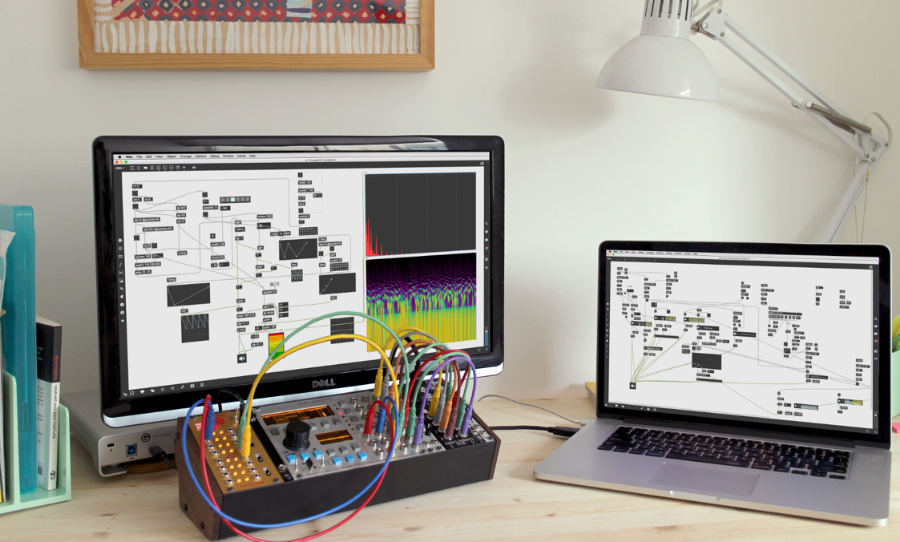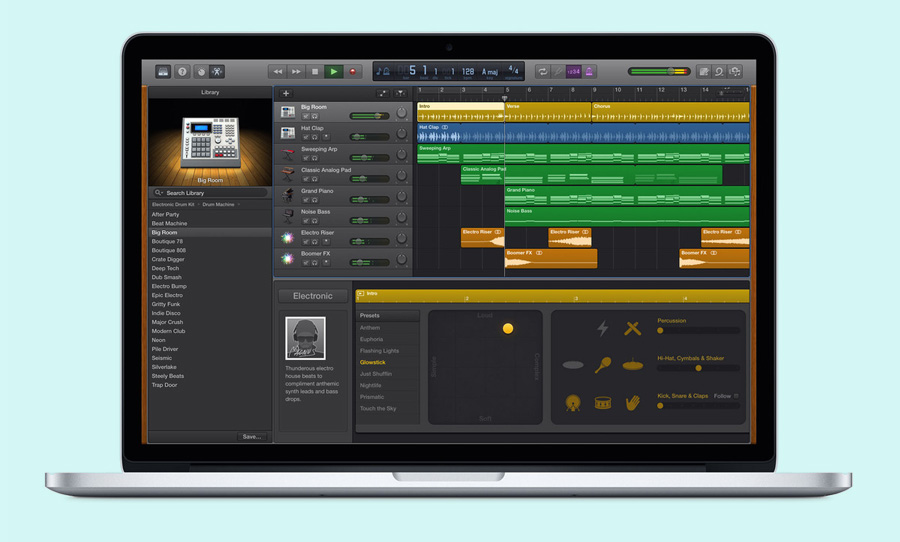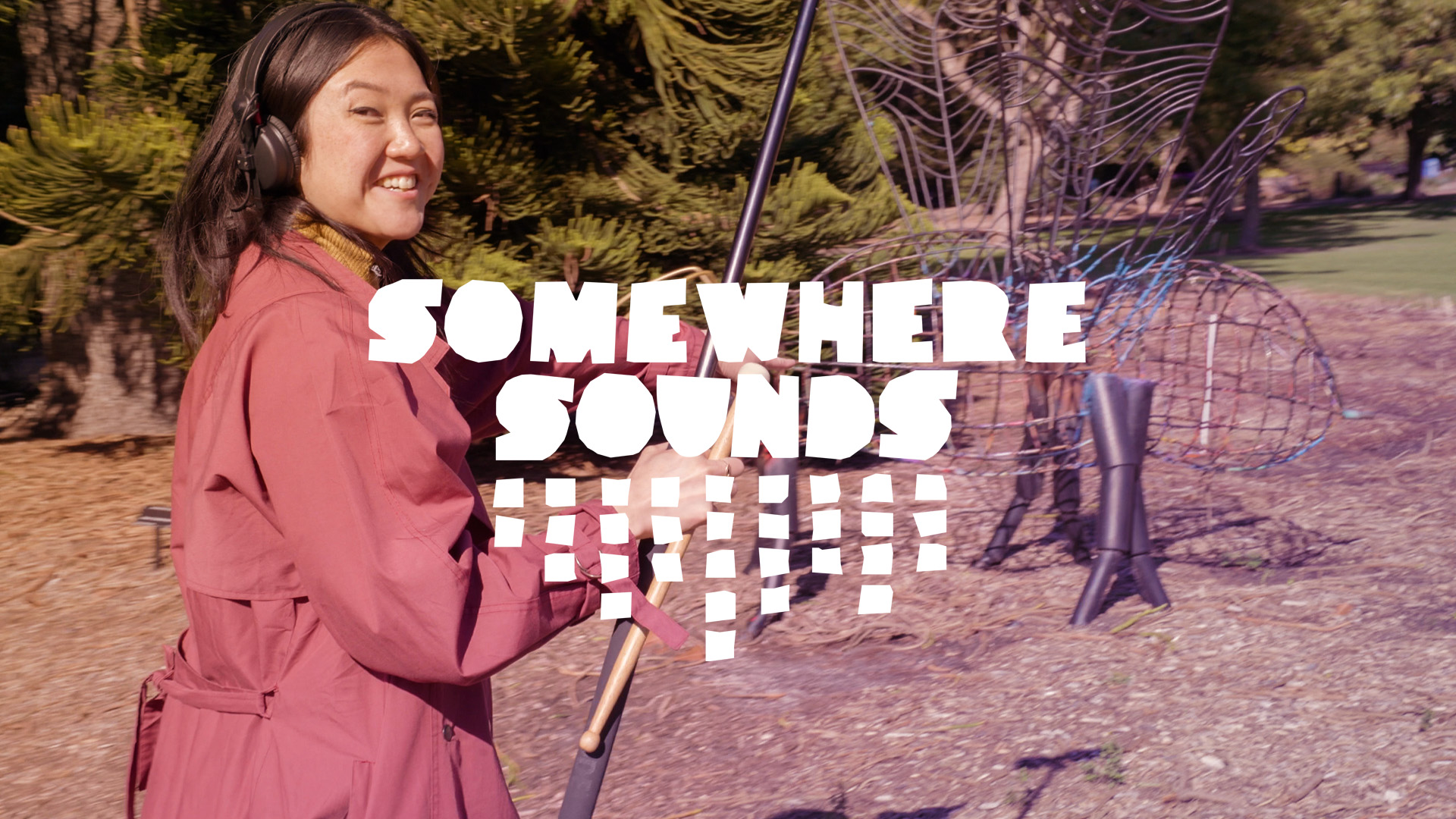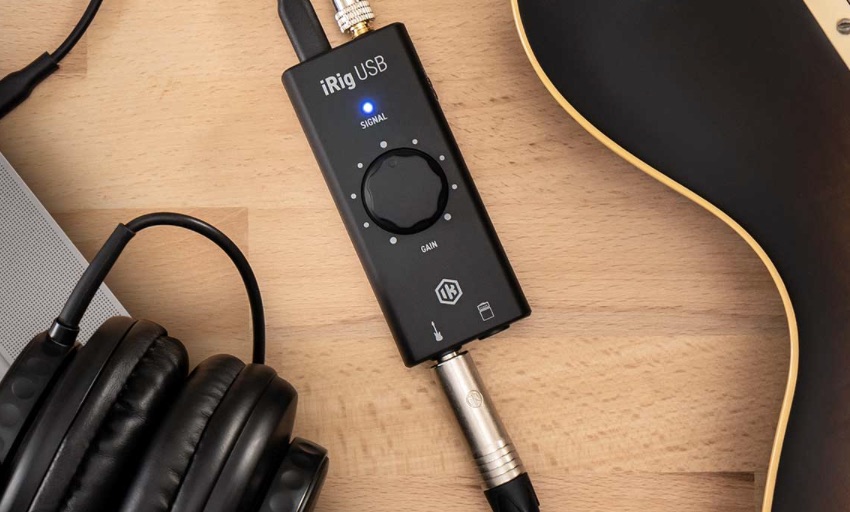Max offers a glimpse into the future of electronic music, allowing you to design custom instruments from the ground up. All you need is a laptop.
Max, Max/MSP, Max 8, Max for Live, Jitter? All the names only add to the confusion of classifying what it actually is. Max is a software made by Cycling ’74, who is now owned by Ableton. It’s a programming language that is centred around visual elements, making it intuitive to explore and create unique ways of structuring, generating, and conceptualising music.
Max (originally called The Patcher) was started in 1985, first made to provide composers with a graphical interface for creating interactive computer music scores on the Macintosh. The first widely recognized use of Max was in Pluton, a 1988 piano and computer piece by Philieppe Manoury, where the software synchronized the computer to a piano. It’s come a long way since then with Max 8 (the latest version) being launched in 2018.
Cycling ’74 describe Max 8 as an, “infinitely flexible space to create your own interactive software”. It provides users with the ability to design their own instruments, processors, and tools for live interaction. Through Max, creating unique computer-based music is more accessible than ever.
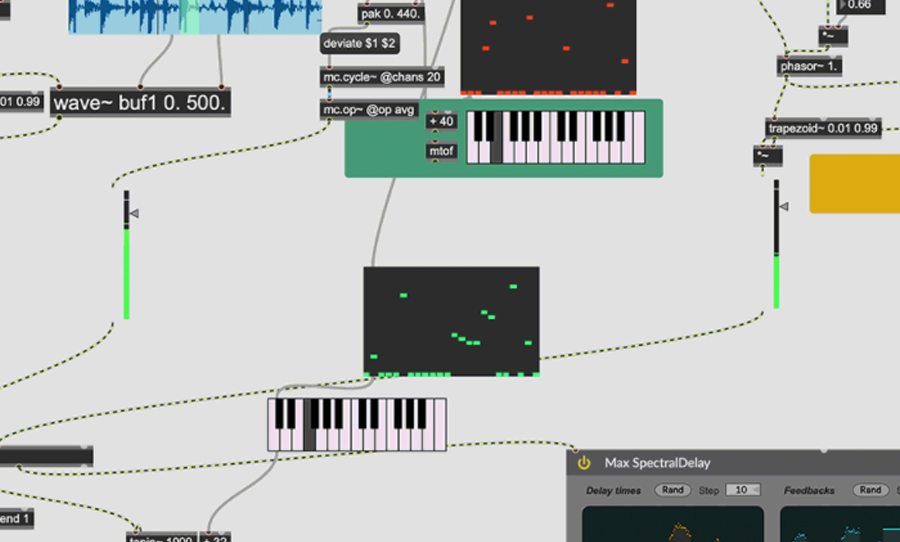
An ‘Object’ lesson
At the core of the software are Objects. They can perform various functions, like generating sound waves or representing hardware, and by using Patchcords you can connect objects to each other (which is when it starts to get fun). By linking Objects, you can create all kinds of sound processors: synthesizers, effects, or even generate visuals from inputs. You can also connect UI objects, which act as dials or sliders to modulate, map, or scale various data.
The visual element is imperative to understanding Max. You can see what’s connected, and how the Objects are affecting each other. The user interface promotes creativity, making it easy to connect and expand different Objects through clear Inlets and Outlets. Max 8 starts with a blank canvas and the patcher expands to fit your work, which makes creating seamless and intuitive.
Patchwork
There are really no limits on how much you can add to a patch; it depends on your approach. Want as much noise as possible? Or do you want to create a synth that self-generates sound based on weather patterns? You’re only limited by your imagination.
Max for Live’s integration with Ableton Live allows you to control lighting, interact with hardware devices, and even generate live visuals from inside of a Max for Live device. This means you can create your own devices to suit your personal needs, whether it be for performance or recording. If that’s a bit too daunting, thousands of user-made devices can be found on Cycling ‘74’s device library.
Being able to build your own unique patches and use them with Ableton is especially exciting for solo performers. Through introducing randomness into the signal chain, it’s like there is another person improvising with you, which leads to performances being interactive and different from night to night. Visual processing is another aspect of Max for Live and is an attractive way for Ableton users to add another performance element to their live sets.
The software isn’t only designed for live performance use. Max has been used by composers, performers, software designers, researchers, and artists to conjure up all kinds of interesting creations. It’s a tool for idea generation — you can try moving Objects around, download other user patches, or try a range of input sources with the same patch. It’s a compelling program for many artists, as you don’t need anything except your computer to harness its power. Plus, it produces results you probably could never have conceived.
There is a lot of community-built software available for those who just want to start creating in Max. One that’s well regarded is lloop, which basically consists of parameters that can be openly controlled by any module (Act) and routed in any direction.
It’s designed for live improvising and interactive installations, to virtually set up reactive environments. The interface and range of the software means you can use it for almost any performance application. This is demonstrated by the stylistic breadth of the artists who use it, such as Christian Fennesz, Keiko U. (o.blaat), Taku Unami, Christof Kuzmann, Paulo Raposo, Alessandro Fogar and many others.
Due to the advent of software like Max, we have access to music that wouldn’t be able to exist previously. Now new instruments can be built from your laptop, whether they self-generate the sound, require MIDI inputs, or use acoustic inputs, you have the ability to create an instrument only you can play.
If you want to get started with Max, there are tons of courses online, and even a book just on how to create step-sequencers in Max/MSP (you can also download a 30-day trial). Alternatively, you can just start moving Objects around — you might just stumble of something completely new.
